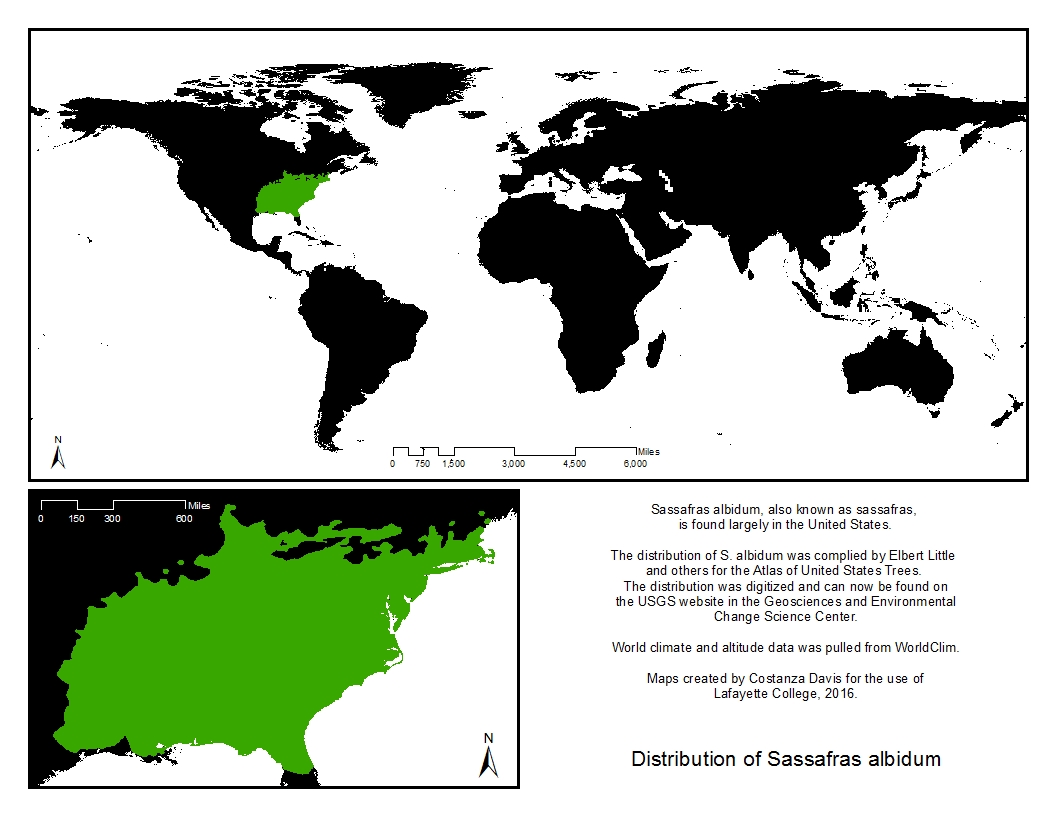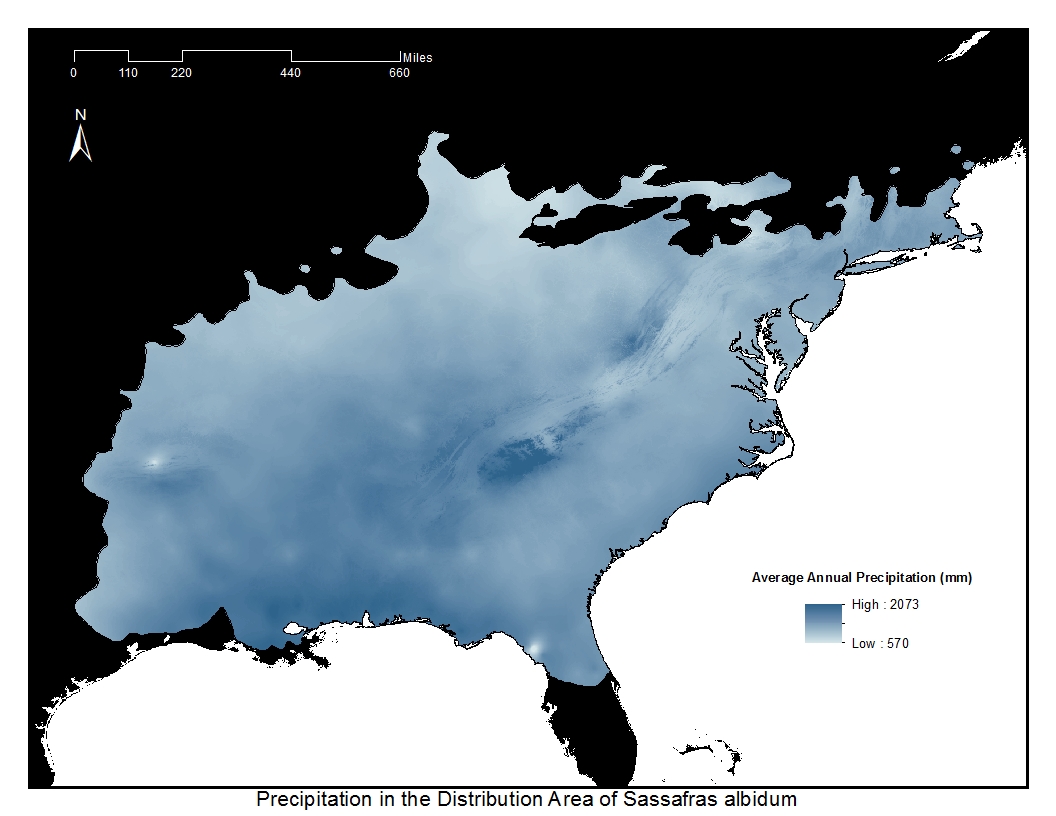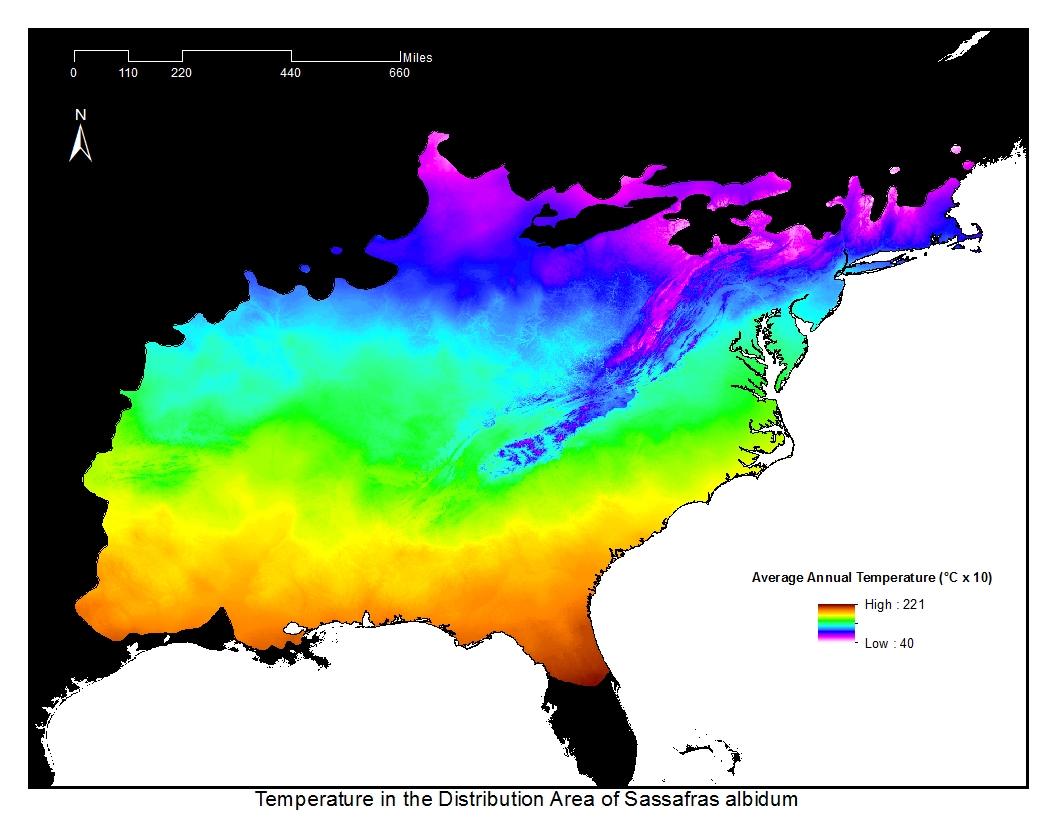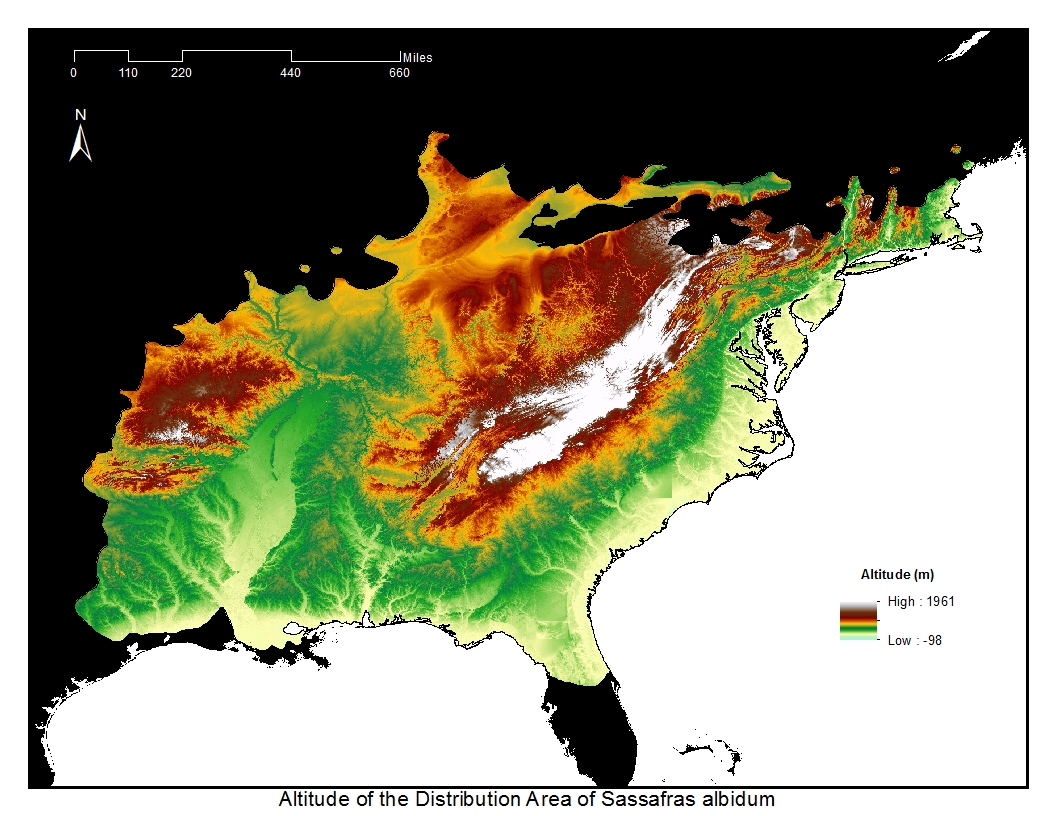Sassafras, Sassafras albidum, is also known as white sassafras. While many species of tree have a single distinctive leaf shape, sassafras has three distinct shapes. The leaves can be entire, twice lobed (mittenshaped), and thrice lobed.
Much of the precipitation in certain habitats is actually snow, though some warmer areas only have an inch or less of snow. Frost-free days number 160 to 300. Moist, well-drained soils are best, though dry soils are tolerated. Sassafras can be found on almost any soil, including pure sand and gravelly soils.
The flowers are yellow to slightly green, forming in clusters in March and April simultaneously with the leaves. The fruit is a dark blue drupe between 0.3 and 0.5 inches long with a single seed, maturing in August and September. The drupe is attached to the branch via a long red pedicel. Such seeds only appear after 10 years of age, with maximum production reached later at 25 to 50 years. Good seed crops can occur every year, or may occur every two years. Sassafras is dioecious, meaning an individual is usually all male or all female.
In imperfect locations, sassafras appears to be more of a shrub. The tree sizes have very straight trunks with a maximum of about 15 inches diameter, though the average is between 6 and 8 inches. Best locations allow the sassafras to grow to almost 100 feet.
Sassafras can regrow easily from root sprouts and cuttings.
Sassafras is intolerant of shade and highly susceptible to fire damage. Foliage diseases are also very damaging to the tree.
Sassafras is good for restoring depleted soils and serves as food for deer. Humans also consume the bark of the roots in tea and the leaves in soups. The oil of the root bark of sassafras is used in perfumes and soaps.




